General
Nahttypen Explained: A Complete Guide to Seam Types, Techniques, and Fabric Matching
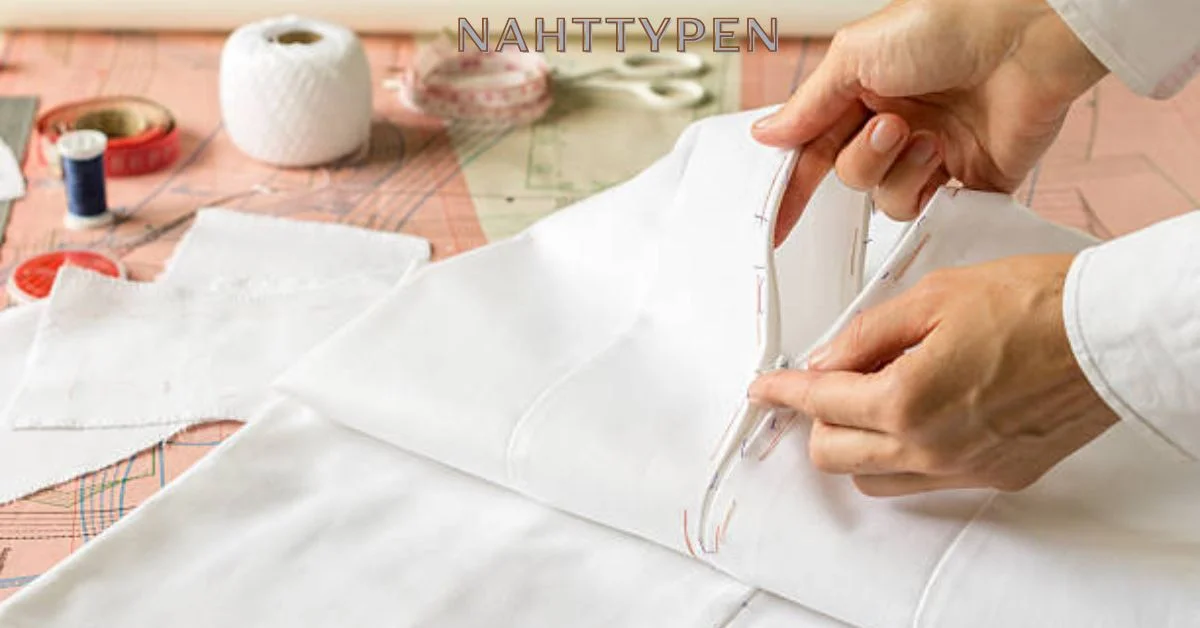
Introduction to Nahttypen (seam types)
When it comes to sewing, understanding nahttypen—or seam types—is essential for anyone looking to create garments that not only look good but also stand the test of time. From simple stitches that hold fabric together to complex techniques designed for specialized materials, the world of seams is as diverse as the fabrics themselves. Whether you’re a seasoned sewist or just starting out, knowing how different seams function can elevate your projects and ensure durability.
Imagine working on a beautiful dress and realizing halfway through that you’ve chosen the wrong seam type—frustrating, right? This guide will walk you through various nahttypen, equipping you with the knowledge to make informed choices based on your fabric selection and project needs. Ready to unlock the secrets behind perfect seams? Let’s dive in!
Basic Seam Types and their Functions
When it comes to nahttypen, understanding the basic seam types is crucial for any sewing project. Each type serves a specific function and can dramatically affect the final outcome.
The straight stitch is perhaps the most common. It provides a strong hold and works well with various fabric types. You’ll find it in everything from garments to home decor.
Zigzag seams offer flexibility and are perfect for knit fabrics. They allow stretch without breaking, making them ideal for T-shirts and athletic wear.
French seams create a clean finish by encasing raw edges. This technique is excellent for lightweight or delicate fabrics where fraying might be an issue.
Flat-felled seams are sturdy and often used in denim construction. They provide durability while keeping the inside of the garment neat and tidy.
Each seam type brings its own advantages, influencing how your fabric behaves over time as well as enhancing overall aesthetics.
Advanced Seam Techniques for Specific Fabrics
Advanced seam techniques cater to specific fabrics, enhancing both functionality and aesthetics. For delicate materials like chiffon or silk, a French seam is ideal. This technique encases raw edges, preventing fraying while providing a polished finish.
When working with stretchy fabrics such as jersey or spandex, consider using the zigzag stitch. This allows for flexibility without compromising the integrity of the fabric. It creates a strong hold while accommodating movement.
For heavier materials like denim, flat-felled seams provide durability and strength. They’re perfect for jeans or jackets that require extra reinforcement at stress points.
If you’re sewing leather or coated fabrics, try employing a walking foot in conjunction with a double needle. This ensures even feed and prevents puckering during construction.
Choosing the right advanced technique can make all the difference in your project’s success and longevity.
Tips for Choosing the Right Seam Type for Your Project
Choosing the right seam type can make or break your project. Start by considering the fabric you’re working with. Lightweight materials often require finer seams, while heavier fabrics demand sturdier options.
Think about the garment’s purpose too. A dress for a special occasion may benefit from delicate French seams for added elegance, whereas workwear needs robust flat-felled seams to endure wear and tear.
Don’t overlook stretch! Fabrics like jersey or spandex need seams that allow movement, such as zigzag stitches or overlock techniques.
Test different seam types on scraps before committing to your main piece. This way, you can see how they interact with your chosen fabric.
Keep in mind the aesthetics of your project. Some seams are meant to be seen—like topstitching—while others should remain hidden for a clean finish.
Common Mistakes and How to Avoid Them
When working with nahttypen, it’s easy to make a few missteps that can derail your project. One common mistake is selecting the wrong seam type for your fabric. Each material has unique characteristics, and using an incompatible seam can lead to puckering or fraying.
Another frequent error is neglecting to test seams on scrap fabric before diving into the main project. This simple step allows you to identify any issues without damaging your final piece.
Additionally, many sewists underestimate the importance of thread tension. Improper tension can cause uneven stitches or even breakage during sewing.
Failing to finish seams properly often leads to unraveling over time. Techniques like zig-zag stitching or serging create a clean edge that extends the life of your garment.
By staying mindful of these pitfalls, you enhance both the quality and longevity of your creations.
Proper Finishing Techniques for a Clean Look
Proper finishing techniques can elevate your sewing projects from basic to professional. The right finish not only enhances the look but also improves durability.
Start by trimming excess fabric close to the seam. This reduces bulk and allows for a smoother profile. Use pinking shears or an overlock stitch to prevent fraying, giving your edges a clean finish.
Pressing seams open is crucial too. It helps in shaping and setting the seam, ensuring that everything lies flat. A good steam iron works wonders here; just be cautious with delicate fabrics.
Don’t overlook topstitching for added strength and style. This technique can create visual interest while reinforcing critical areas of your garment.
Consider using bias tape on raw edges for a polished appearance. With these techniques in mind, each project will reflect clarity and professionalism without compromising on function or beauty.
Conclusion
Understanding nahttypen is essential for anyone looking to enhance their sewing skills. By familiarizing yourself with various seam types, you can make informed choices that elevate your projects. Whether you’re working on simple garments or intricate designs, the right seam can significantly impact both functionality and aesthetics.
Basic seams provide a sturdy foundation, while advanced techniques open up new possibilities for unique fabrics. Knowing how to choose the appropriate seam type based on your project ensures durability and a polished finish. Avoiding common mistakes in sewing will save you time and frustration, allowing you to focus on creativity instead of corrections.
Finishing techniques play an equally important role in achieving that professional look we all strive for. A well-finished seam not only looks great but also extends the life of your fabric.
As you delve deeper into the world of nahttypen, you’ll find a wealth of knowledge waiting to be explored. Keep experimenting with different seams and techniques; there’s always something new to learn!
General
Caricatronchi Explained: From Sketches to Viral Masterpieces
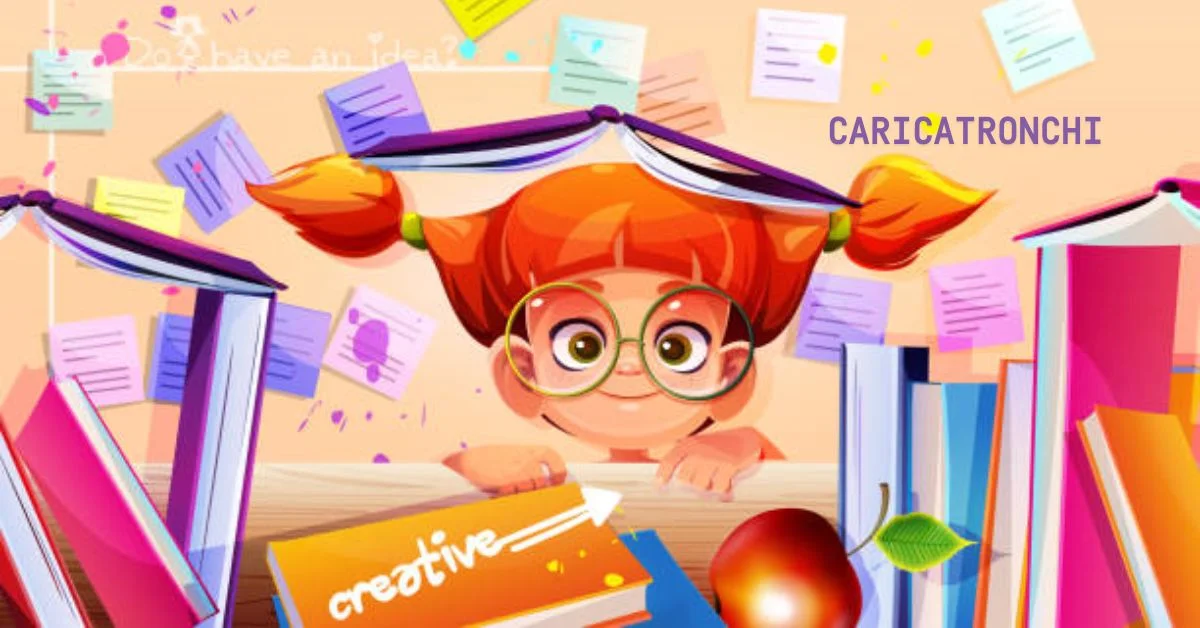
Introduction to Caricatronchi
Caricatronchi is not just a whimsical art form; it’s a cultural phenomenon that has captured the attention of millions. Imagine taking a simple pencil sketch and transforming it into something that resonates deeply with people around the world. This distinctive fusion of caricature and cartooning captures deep emotions, witty insights, and bold commentary through powerful visuals.
As social media platforms continue to influence our daily lives, caricatronchi have emerged as viral masterpieces, bringing joy and laughter while also sparking conversations about contemporary issues. Curious about how this captivating art form came to be? Let’s explore the captivating and imaginative world of Caricatronchi together!
Brief History and Evolution of Caricatronchi
Caricatronchi has roots that trace back centuries. It began as a playful artistic expression, capturing exaggerated human features in sketches. Early caricatures served not only for amusement but also for social commentary.
As time progressed, artists refined their techniques. The introduction of digital tools transformed traditional sketching into something more dynamic and accessible. What once required meticulous hand-drawing now flourished online.
The 21st century saw caricatronchi evolve further with social media platforms fueling its popularity. Artists began sharing their work widely, reaching audiences beyond boundaries.
This evolution marks a shift from local art to global phenomena, where creativity knows no limits. Today’s caricatronchi blends humor and artistry seamlessly while addressing contemporary themes—making it relevant across generations.
The Process of Creating a Caricatronchi
Creating a caricatronchi is an art form that combines skill, humor, and personal flair. The process begins with a simple sketch. Artists often start by capturing distinctive features of their subjects, emphasizing traits in exaggerated ways.
Once the basic outline is complete, colors are chosen to enhance the caricature’s personality. Bright hues tend to draw attention and evoke emotions, adding depth to the piece.
Next comes digital enhancement or traditional inking. Many artists use software tools for precision; others prefer classic methods like markers or paints.
Sharing on social media platforms breathes life into these creations. The potential for virality keeps artists motivated as they see their work resonate with diverse audiences worldwide. Each caricatronchi becomes not just an artwork but also a statement that invites laughter and connection among viewers.
How Caricatronchi has Taken the Internet by Storm
Caricatronchi has become a sensation across social media platforms. Artists showcase their creations, often blending humor with sharp commentary on contemporary issues. With just a few strokes of digital ink, they transform ordinary moments into shareable masterpieces.
The viral nature of these artworks is fueled by their relatability. Users find themselves tagging friends or sharing them in group chats, making the art an interactive experience. Everyday observations morph into witty caricatures that resonate with diverse audiences.
Platforms like Instagram and TikTok have played crucial roles in this phenomenon. Creators leverage trending hashtags to reach wider audiences, ensuring that caricatronchi remains at the forefront of online culture.
Challenges and contests further amplify engagement, encouraging artists to push boundaries while inviting fans to join in the fun. This dynamic exchange fosters a community centered around creativity and laughter—a testament to the enduring appeal of caricatronchi in today’s fast-paced digital landscape.
The Impact of Caricatronchi on Pop Culture and Politics
Caricatronchi has emerged as a significant force in both pop culture and politics. These exaggerated caricatures capture the essence of public figures, often highlighting their most recognizable traits. This art form turns everyday subjects into relatable content that resonates with audiences worldwide.
In political circles, caricatronchi serve as sharp commentary on current events. They can sway public opinion by distilling complex issues into humorous visuals that spark conversation. A well-crafted caricatronchi can make even the most serious topics approachable.
Pop culture also embraces this art style through memes and viral content. Social media platforms are flooded with these creative interpretations, allowing artists to gain recognition overnight. The blend of humor and artistry makes them shareable, fueling their reach beyond traditional boundaries.
This dynamic interplay between art and society continues to shape conversations around cultural identity and political discourse today.
Tips for Creating Your Own Caricatronchi
Designing your own Caricatronchi can be an enjoyable and fulfilling creative journey. Start with a clear reference image. Choose someone whose features stand out.
Next, focus on exaggerating key characteristics. Emphasize standout features like sharp cheekbones or large glasses to enhance the comedic impact. The goal is to capture the essence of the subject while adding your unique twist.
Use bold lines and vibrant colors to bring your artwork to life. Don’t shy away from playful backgrounds that enhance the personality of your drawing.
Try out various styles and techniques to discover the approach that best reflects your creative voice. Digital tools like tablets can offer flexibility, but traditional methods have their charm too.
Share your creations online! Engage with communities that appreciate this art form. Feedback can help refine your skills and inspire new ideas as you continue exploring caricatronchi artistry.
Conclusion and Future of Caricatronchi Art
The future of Caricatronchi art is full of potential, with evolving creativity set to introduce fresh styles and innovative techniques that redefine this expressive medium. Artists will likely explore innovative ways to incorporate technology into their work, from augmented reality experiences to interactive installations.
Social media platforms will remain a key catalyst for sharing these captivating creations. The ability for artists to connect with audiences globally has already transformed how caricatronchi art is perceived and consumed. This digital age fosters an environment where viral trends can take off overnight.
Moreover, as society grapples with complex issues in politics and pop culture, caricatronchi may serve as a powerful medium for commentary and satire. These exaggerated sketches often resonate deeply with viewers by reflecting societal truths through humor.
As you embark on your journey in creating your own caricatronchi masterpieces or simply appreciate the artistry behind them, remember that each sketch tells a story—a narrative woven through creativity, wit, and talent. There’s no telling what exciting developments await us in the world of caricatronchi!
General
Calmered: Innovative Solutions for a Stress-Free Digital Life
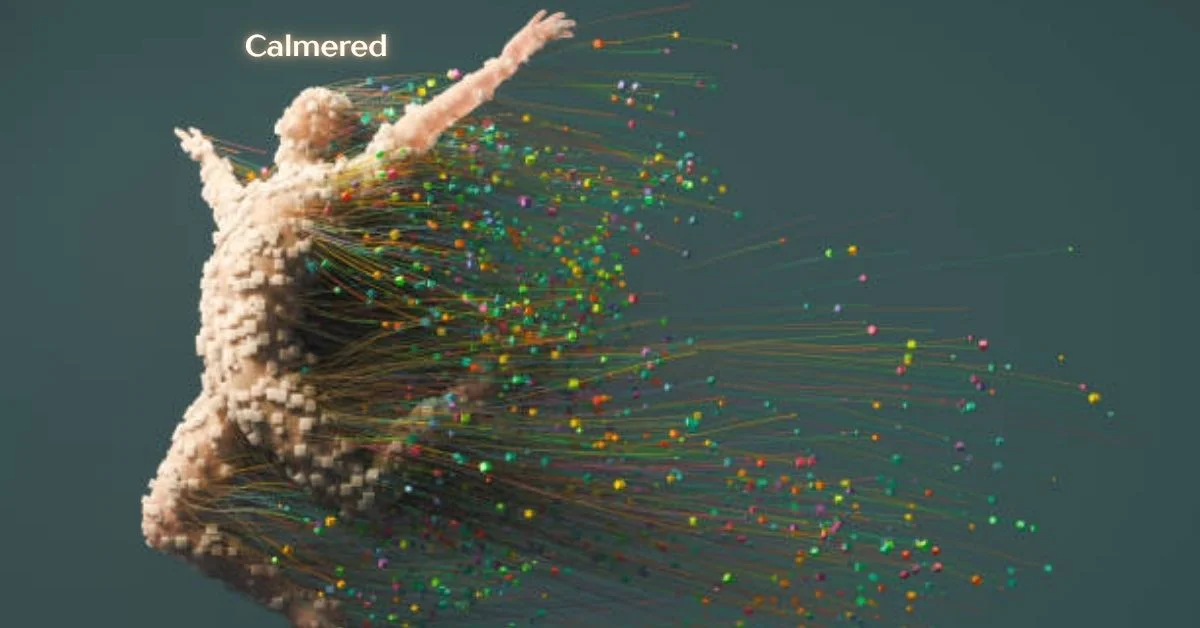
Introduction to the concept of Calmered
In today’s fast-paced digital world, it can feel like we’re constantly plugged in. Notifications buzz, screens glow, and information floods our minds from every angle. While technology has undoubtedly enhanced our lives, it also brings a unique set of challenges that can weigh heavily on our mental health. Wouldn’t it be great to find a way to navigate this digital landscape more mindfully? Introducing Calmered—a groundbreaking solution crafted to help you restore calm and balance in the midst of digital chaos. Let’s explore how we can cultivate a stress-free digital life together!
The effects of digital overload on mental health
Digital overload can feel overwhelming. The constant ping of notifications and relentless streams of information can lead to heightened anxiety levels.
When we’re bombarded with updates, our brains struggle to keep pace. This leads to mental fatigue, making it hard to focus on tasks or enjoy downtime.
Social media often intensifies feelings of inadequacy or loneliness. Comparing ourselves to others’ highlight reels creates unnecessary pressure.
Sleep disturbances are another consequence of too much screen time. Blue light emitted from devices disrupts our natural sleep patterns, leaving us drained the next day.
Increased irritability is also common among those who experience digital overload regularly. Small frustrations become magnified when we’re already mentally taxed by technology.
All these factors contribute to a decline in overall well-being, illustrating how vital it is to maintain balance in our digital interactions.
Common stressors in our digital lives
Our digital lives are filled with constant distractions. Notifications buzz from our phones, pulling us away from the present moment. Each ping can create a wave of anxiety.
Social media is another major stressor. The pressure to keep up with posts and likes can feel overwhelming. It often leads to comparison and self-doubt, as we scroll through curated highlights of others’ lives.
Work-related emails invade personal time too. Many people find it hard to disconnect after hours, blurring the lines between work and home life.
Moreover, information overload is rampant. With endless articles, videos, and updates at our fingertips, deciding what to engage with becomes exhausting.
These factors contribute significantly to heightened stress levels in an already fast-paced world. Acknowledging these issues is the initial move toward achieving harmony in the midst of today’s digital turmoil.
Calmered’s approach to a stress-free digital life
Calmered takes a fresh approach to navigating our digital world. It understands that technology should enhance our lives, not overwhelm them.
At its core, Calmered promotes mindfulness in digital engagement. This means being intentional about how we use devices and which platforms we interact with daily.
The platform encourages users to take breaks from screens, emphasizing the importance of disconnecting regularly. These moments away help refresh the mind and reduce anxiety associated with constant notifications.
Calmered provides customized solutions carefully designed to meet each person’s unique needs. Users can identify their unique stress triggers and receive actionable tips for managing them effectively.
By fostering a community centered on shared experiences, Calmered creates a supportive environment where individuals can learn from one another’s journeys toward calmer digital interactions. The goal is simple: reclaim control over your tech habits for a more balanced life.
Tools and techniques for managing technology and reducing stress
Managing technology doesn’t have to feel overwhelming. Calmered offers innovative tools that simplify your digital interaction.
One effective technique is the use of scheduling apps. These can help you allocate specific times for social media, emails, and other online activities. Establishing clear limits allows you to take back control of your schedule.
Mindfulness practices also play a crucial role. Integrating short meditation sessions or deep-breathing exercises into your daily routine helps ground you amidst the chaos of notifications and alerts.
Another helpful approach is decluttering your digital space. Unsubscribe from unnecessary newsletters and delete unused apps to create a more focused environment.
Consider turning off non-essential notifications. This allows for uninterrupted periods of productivity and reduces anxiety caused by constant pings. Balancing tech use with these strategies fosters a calmer mindset in an increasingly connected world.
Success stories from individuals who have implemented Calmered strategies
Sarah, a busy marketing executive, found herself overwhelmed by constant notifications and endless email threads. After discovering Calmered, she implemented digital detox periods into her day. Now, Sarah enjoys focused work sessions without distractions. The result? Increased productivity and clarity.
John, a college student grappling with anxiety from social media pressure, turned to Calmered’s mindful tech usage techniques. By limiting his screen time and engaging more in face-to-face interactions, he noticed significant improvements in his mental well-being. His stress levels dropped markedly.
Emily transformed her evenings by establishing tech-free zones at home after adopting Calmered’s strategies. This shift allowed her family to reconnect over dinner without screens interrupting their conversations.
These stories illustrate how personalized approaches can lead to transformative changes in managing technology-related stress effectively. Each individual discovered the profound impact that thoughtful engagement with technology can have on their daily lives.
Conclusion: A call to action for a healthier relationship with technology
As we navigate our increasingly digital lives, it’s crucial to pause and reflect on the relationship we maintain with technology. The constant notifications, endless scrolling, and information overload can take a toll on our mental well-being. Calmered offers innovative solutions that empower us to reclaim control.
By implementing the strategies provided by Calmered, individuals can foster a healthier connection with their devices. It’s about finding balance—a way to enjoy technology without letting it dominate our lives. Each small step towards mindfulness can lead to significant positive changes in how we experience the digital world.
Consider taking action today. Explore Calmered’s tools and techniques tailored for your needs. Whether it’s setting boundaries or engaging in digital detoxes, these practices are designed to alleviate stress and enhance your overall quality of life. Embrace this opportunity for a more peaceful existence amid the noise of modern technology; you deserve it!
General
Pabington: From Historic Village to Modern Creative Powerhouse

Introduction to the charming village of Pabington
Nestled in a lush landscape, Pabington is more than just a picturesque village. It’s a place where history whispers through cobblestone streets and creativity flows like the nearby river. With its charming cottages and vibrant community spirit, Pabington captures the hearts of those who visit. As you wander through this captivating locale, you’ll find that every corner tells a story, blending the echoes of the past with the dynamic pulse of modern artistry. Whether you’re an art enthusiast or simply looking for a serene getaway, Pabington promises an experience unlike any other—a delightful fusion of tradition and innovation waiting to be explored.
The rich history and cultural significance of Pabington
Pabington boasts a history that stretches back centuries. Originally settled in the early 1700s, it has witnessed countless changes over time. The village’s charming architecture reflects its storied past, with quaint cottages and historical buildings lining its streets.
Local folklore adds to Pabington’s cultural tapestry. Tales of ancient traditions and community gatherings fill the air, connecting residents to their roots. This sense of belonging is palpable during annual celebrations that honor the village’s heritage.
The landscape itself tells a story too, with landmarks like old churches and town squares serving as reminders of Pabington’s vibrant beginnings. Artifacts found in nearby areas hint at even older civilizations that once thrived here.
Visitors often find themselves enchanted by this rich narrative woven into everyday life. It’s not just a place; it’s an experience steeped in history waiting to be explored further by those who venture into its heart.
How Pabington has evolved into a thriving creative community
Pabington has undergone a remarkable transformation in recent years. Formerly a tranquil village, it has transformed into a vibrant hub of creativity and innovation.
Creators from diverse artistic fields have gravitated toward this scenic destination. They find inspiration in its scenic beauty and rich heritage. This influx of talent has breathed new life into Pabington’s streets.
The local art scene is vibrant and diverse. Galleries pop up where quaint shops once stood, showcasing everything from contemporary paintings to handcrafted jewelry. Workshops abound, inviting everyone to explore their creative side.
This evolution fosters collaboration among artists and residents alike. Community projects unite individuals with different skills and backgrounds, sparking fresh ideas that redefine the village’s identity.
During seasonal events, communal areas are converted into vibrant open-air art galleries. These gatherings celebrate artistic expression while drawing visitors eager to experience Pabington’s unique charm firsthand.
Local artists and their impact on the village’s transformation
Pabington has become a canvas for local artists who breathe life into its streets. Their creativity transforms ordinary spaces into vibrant showcases of talent.
These artists have not only beautified the village but also fostered a sense of community. Murals adorn once-blank walls, telling stories that resonate with both residents and visitors.
Art studios and galleries now line the main street, attracting art lovers from all over. Each exhibition offers a glimpse into Pabington’s unique culture.
Collaborative projects have emerged, bringing people together in creative endeavors. Workshops invite locals to explore their artistic sides, reinforcing connections between generations.
The presence of these talented individuals has sparked an economic revival as well. Unique boutiques and cafés spring up around their workspaces, turning Pabington into a must-visit destination for those seeking inspiration and engagement with the arts.
The unique businesses and attractions in Pabington
Pabington is home to a vibrant array of unique businesses that reflect its creative spirit. Charming boutiques dot the cobblestone streets, showcasing handcrafted creations and locally inspired artwork. Each shop tells a story, inviting visitors to explore what makes Pabington special.
Cafés in town serve artisanal coffee brewed from locally sourced beans. These cozy spots often feature rotating exhibits by resident artists, making every visit an experience for the senses.
Don’t miss the charming farmer’s market held weekly at the village square. Here, you can find fresh produce, homemade jams, and baked goods crafted by passionate locals.
For those seeking adventure, outdoor activities abound in Pabington’s picturesque surroundings. Scenic trails wind through lush forests and along serene waterways, perfect for hiking or cycling while soaking up the area’s natural beauty.
These attractions make Pabington not just a destination but a community thriving with creativity and character.
Festivals and events that highlight Pabington’s rich creativity and artistic talent
Pabington comes alive with a variety of events that highlight its artistic spirit. The annual Pabington Arts Festival draws visitors from far and wide, celebrating local talent through vibrant exhibitions and interactive workshops.
Artists showcase their work in pop-up galleries, while musicians fill the streets with melodies that resonate across the village. Local food vendors complement the experience by offering delicious bites inspired by regional flavors.
Another highlight is the Pabington Creative Market, where artisans sell handcrafted goods ranging from jewelry to textiles. This market not only supports local creators but also fosters community connections.
Throughout the year, themed art walks invite residents and tourists alike to explore hidden gems around town. Each event reflects Pabington’s commitment to creativity and brings people together in celebration of shared passions and talents.
Sustainable tourism in Pabington and its positive impact on the community
Eco-friendly tourism in Pabington isn’t merely a passing trend; it’s an integral part of the village’s lifestyle. The village embraces eco-friendly practices that preserve its stunning landscape and rich heritage.
Local businesses focus on responsible sourcing of materials, ensuring minimal environmental impact. Visitors are encouraged to explore the area on foot or by bike, reducing carbon footprints while soaking in breathtaking views.
Community-driven initiatives have sprung up, enhancing awareness about conservation efforts. Workshops educate both locals and travelers about sustainability’s importance.
Additionally, profits from eco-tourism often flow back into community projects. This creates jobs and supports local artisans who infuse their craft with the village’s history.
Visitors leave with unforgettable memories while contributing positively to Pabington’s future. The balance between enjoying nature and protecting it has forged lasting connections within this close-knit community.
Future plans for Pabington
Pabington is buzzing with potential as it looks toward the future. Local leaders are committed to preserving its historic charm while embracing innovation.
Plans for enhanced community spaces are underway, aiming to create more hubs for creativity and collaboration. A new arts center is on the horizon, designed to showcase local talent and host workshops that inspire both residents and visitors alike.
Sustainability initiatives will play a key role in Pabington’s growth. Investments in green infrastructure aim to promote eco-friendly practices throughout the village, making it a model for responsible tourism.
The culinary scene is also expanding. New restaurants featuring farm-to-table concepts will highlight locally sourced ingredients while diversifying dining options.
Engagement with neighboring towns could further enrich Pabington’s cultural tapestry. Collaborative events may bring fresh ideas and experiences that celebrate shared heritage and artistic expression.
Conclusion
Pabington is a captivating blend of history and creativity. The village’s rich past informs its modern identity, making it a unique destination for visitors and locals alike. As Pabington continues to nurture its artistic community, the transformation into a creative powerhouse becomes increasingly evident.
Local artists are at the heart of this evolution, contributing their talents and vision to the village’s character. Their work not only enhances Pabington’s aesthetic but also strengthens community bonds.
With an array of unique businesses and attractions, there’s something for everyone in Pabington. The vibrant events and festivals further highlight the talent that flourishes here, creating memorable experiences for all who attend.
Sustainable tourism plays a crucial role in shaping Pabington’s future. By emphasizing eco-friendly practices, the village supports both nature and local culture while inviting visitors to fully appreciate what makes it special.
Looking ahead, exciting plans promise to keep Pabington evolving as an inspiring hub of creativity while preserving its enchanting charm for generations to come. With each new development or event, there is always more to discover in this remarkable place where history meets innovation.
-

 Business5 months ago
Business5 months agoSEO Experts at Garage2Global: Boosting Business Rankings Fast
-

 Food & Drinks5 months ago
Food & Drinks5 months agoCalamariere: A Flavorful Journey Through Tradition
-

 Entertainment6 months ago
Entertainment6 months agoPlayers Infoguide Dmgconselistas: Dominate Every Match with Real-Time Metrics and Pro-Level Game Analysis
-
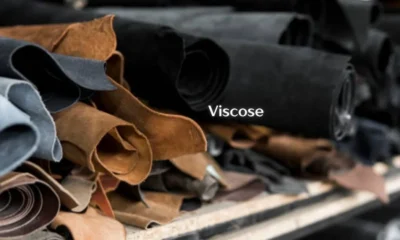
 Fashion5 months ago
Fashion5 months agoViscose Explained: Fabric Making, Applications & Sustainability
-

 Entertainment6 months ago
Entertainment6 months agoGoonierne 2: A Surreal Web Game Blurring Fact, Fiction, and Digital Folklore
-

 General6 months ago
General6 months agoSerialpressit com: The Simple, Smart Blogging Hub That’s Winning Readers and Writers in 2025
-

 General6 months ago
General6 months agoWhy SBXHRL Is the Backbone of Modern Blogging
-
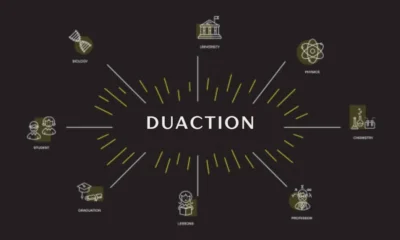
 Education6 months ago
Education6 months agoDuaction: How Action-Driven Education Transforms Students, Professionals, and Organizations



